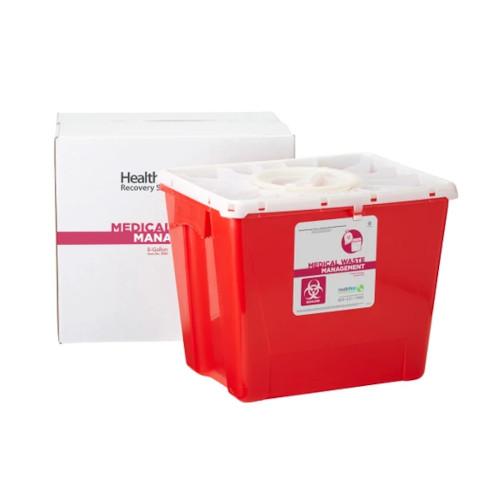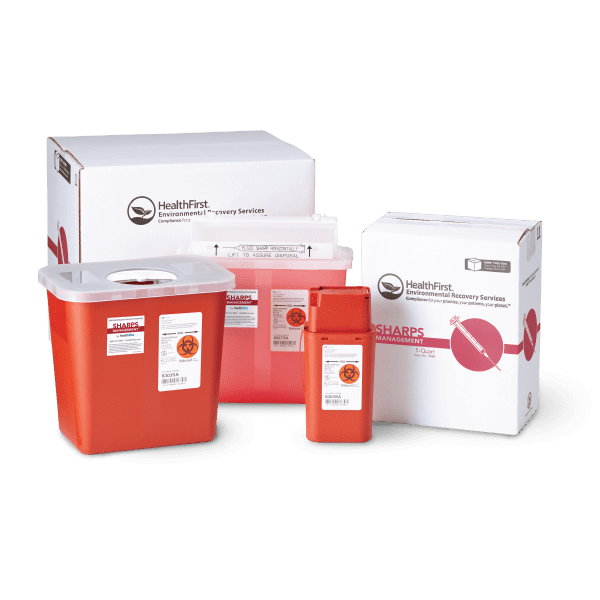Medical Care Health Heroes: The Unsung Duty of Medical Waste Removal Service
Medical Care Health Heroes: The Unsung Duty of Medical Waste Removal Service
Blog Article
Checking Out Different Garbage Disposal Options for a Cleaner Environment
In the search of a cleaner setting, the monitoring of waste disposal has become a crucial focal point for sustainable development. With a wide variety of waste disposal choices offered, ranging from standard land fill approaches to ingenious waste-to-energy technologies, the option of just how we manage our waste has far-ranging effects for our earth's health. By taking a look at the different methods and strategies employed in reusing, composting, incineration, landfill monitoring, and waste-to-energy processes, a much deeper understanding of their effects and effectiveness can be gained. The pursuit for ideal garbage disposal techniques that focus on ecological conservation while fulfilling the demands of an expanding population remains a pushing worry in today's globe.
Recycling Techniques
Carrying out efficient recycling approaches is critical in lessening waste and promoting sustainability in our atmosphere. Recycling includes the procedure of converting waste products right into reusable objects to stop unnecessary disposal.
One more crucial recycling approach is composting, which involves breaking down natural waste like food scraps and yard trimmings into nutrient-rich soil. This process not only diverts organic waste from garbage dumps yet also produces a useful source for horticulture and farming. Additionally, upcycling is a creative recycling method that includes changing old or thrown out products right into items of greater quality or value. By incorporating these various recycling methods into our waste monitoring techniques, we can dramatically reduce our ecological impact and move towards a more sustainable future.

Composting Techniques
Effective waste monitoring practices, such as reusing techniques, lead the way for a cleaner atmosphere, and currently, shifting the focus to 'Composting Techniques', we discover sustainable methods to decay organic waste for ecological benefit. medical waste removal.
Composting is an all-natural procedure that transforms organic waste, like food scraps and yard trimmings, right into a nutrient-rich dirt amendment. The secret to effective composting hinges on developing the best equilibrium of environment-friendly materials, such as fruit and veggie scraps, and brownish materials, like dried fallen leaves and branches. These materials break down with the aid of microbes, damaging down the waste right into valuable garden compost.
There are numerous composting strategies offered to fit various requirements. Conventional yard composting entails layering natural materials in a container or heap and on a regular basis transforming the blend to freshen it. Vermicomposting, on the various other hand, uses worms to break down organic matter into compost (click here). For those with minimal room, interior composting systems provide a practical solution. By utilizing composting methods, we can minimize the quantity of waste sent out to landfills while producing a helpful item for improving dirt and sustaining plant development.
Incineration Advantages And Disadvantages
Incineration, as a waste disposal technique, provides both advantages and drawbacks that warrant mindful factor to consider in the realm of sustainable waste monitoring techniques. On the silver lining, incineration can significantly decrease the volume of waste, lessening the requirement for garbage dump room and possibly decreasing greenhouse gas exhausts. Incineration likewise permits the recovery of energy through the generation of electricity or warmth, adding to source recovery. Furthermore, the procedure can be utilized to destroy dangerous compounds, offering a secure technique for dealing with specific sorts of waste that may pose dangers to public health and the setting if left without treatment.
Nonetheless, there are notable downsides to incineration. One major concern is the possible release of hazardous pollutants right into the air, such as dioxins, hefty steels, and particulate issue, which can have adverse impacts on human wellness and the environment. Furthermore, the high first financial investment and operational prices of incineration facilities pose economic difficulties, making it a much less affordable option contrasted to various other waste monitoring approaches. Careful tracking and law are necessary to mitigate these negative impacts and optimize the advantages of incineration as part of a thorough waste management approach.
Landfill Administration Techniques
Land fills play an important function in waste administration and ecological preservation by supplying a control system for the disposal of strong waste products. Reliable land fill monitoring approaches are important to reduce environmental impacts and guarantee the long-term sustainability of these waste disposal websites. One crucial technique is correct waste compaction to take full advantage of using available area within the landfill (click here). By compacting the waste, the volume is reduced, enabling more waste to be fit over time.
Moreover, the application of daily cover practices is essential in minimizing smells, protecting against clutter, and minimizing the tourist attraction of pests. Covering the disposed waste at the end of each day aids to consist of odors and protect against prospective environmental contamination. Furthermore, the monitoring of land fill gas discharges and leachate levels is important in guaranteeing that ecological criteria are met which any type of potential dangers to surrounding ecosystems are reduced.

Waste-to-Energy Technologies
Among the cutting-edge strategies to waste management involves taking advantage of Waste-to-Energy technologies to convert solid waste into functional energy resources. Waste-to-Energy (WtE) modern technologies include an array of procedures that intend to draw out energy from waste materials through thermal, chemical, or biological means. This conversion process not just lowers the quantity of waste that winds up in landfills but also produces valuable power sources such as electrical power, warm, or biofuels.
There are a number of techniques of Waste-to-Energy conversion, consisting of pyrolysis, incineration, and gasification. Incineration involves shedding waste at high temperature levels to create warmth and electrical energy. Gasification converts waste right into a syngas, which can be utilized for power generation or chemical manufacturing. Pyrolysis breaks down natural materials making use of high temperature levels in the absence of oxygen, producing bio-oil, gas, and char.
Carrying out Waste-to-Energy technologies can aid reduce ecological problems associated with typical waste disposal methods while all at once offering a renewable resource resource. Nonetheless, mindful consideration has to be provided to exhausts control and guaranteeing the sustainability of feedstock supplies for these modern technologies to be really helpful for a cleaner environment.

Verdict
To conclude, checking out numerous garbage disposal choices such as reusing, composting, incineration, garbage dump monitoring, and waste-to-energy technologies is vital for advertising a cleaner atmosphere - click here. Each approach has its own benefits and obstacles, but by utilizing a combination of these techniques, we can function towards lowering the quantity of waste that ends up in garbage dumps and eventually add to an extra sustainable future for generations ahead
With a multitude of waste disposal options offered, ranging from standard land fill techniques to cutting-edge waste-to-energy technologies, the choice of how we handle our waste has far-reaching implications for our world's wellness. medical waste disposal.Incineration, as a waste disposal method, provides both advantages and downsides that merit cautious consideration in the realm of sustainable waste management techniques.Land fills play a crucial role in waste management and environmental preservation by giving a control system for the disposal of solid waste materials. By compacting the waste, the quantity is lowered, allowing for more waste to be suited over time
One of the Find Out More cutting-edge approaches to waste administration includes using Waste-to-Energy modern technologies to transform strong waste right into usable energy resources.
Report this page